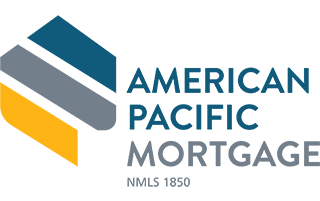How To Get A USDA Loan With Bad Credit
 There aren’t many home buyers out there that have the money on hand to buy a house outright, which is why the majority of them turn to home mortgages. However, lenders typically require borrowers to have above a certain credit score to mitigate the risk of the borrower defaulting. This doesn’t necessarily mean that if you have poor credit that you’re out of luck. There are still some loan options out there that you might be eligible for despite your poor credit, such as the USDA loan.
There aren’t many home buyers out there that have the money on hand to buy a house outright, which is why the majority of them turn to home mortgages. However, lenders typically require borrowers to have above a certain credit score to mitigate the risk of the borrower defaulting. This doesn’t necessarily mean that if you have poor credit that you’re out of luck. There are still some loan options out there that you might be eligible for despite your poor credit, such as the USDA loan.
Quick Overview Of USDA Loan
The USDA loan is a government-backed loan offered by the U.S. Department of Agriculture (USDA). It was established as a way to encourage home buyers to purchase property in more rural and suburban areas of the country, thereby helping to promote and improve both the economy and the quality of life in those areas. Several of the benefits to taking out a USDA loan include the zero down payment requirement and the low-interest rates.
Type Of USDA Loan Program
There are two types of USDA loans: USDA guaranteed loans and direct loans. The difference between the two lies in how you obtain the loan and the income level requirements of each loan.
Loan Guarantees And Requirements
USDA guaranteed loans work in a similar fashion to other government-backed loans, such as FHA loans and VA loans: the USDA insures the loan, but the loan itself is obtained through a participating lender. The lender will typically relax their criteria for eligibility since the loan is backed by the USDA. This eliminates the risk of losing money if the borrower defaults on them.
Despite the USDA’s backing, there are still a number of requirements that must be met. Besides proving that you’re a U.S. citizen or permanent resident, the estimated monthly payment for your house (including principal, interest, insurance, and taxes) can’t cost more than 29 percent of your monthly income. Any other monthly debts you have to pay can’t exceed 41 percent of your income. However, there is some flexibility–if your credit score is higher than 680, then they will consider higher debt ratios.
There are some income limits as well. Your base income limit must be less than 115 percent of the area’s median income. There are also a few household income limits you must meet. For a household with four or fewer people, your household income can’t be more than $82,700. For households with five to eight members, it can’t be more than $109,150. Finally, the property must be your primary residence.
Direct Loans And Requirements
If your income is low or very low, which is determined by the income threshold established by the USDA for direct USDA loans (which varies from one area to another), then you may be eligible for a direct USDA loan. This means that the USDA will issue the loan to you directly, not through a lender. With the use of subsidies, your USDA loan’s interest rate could be as little as one percent.
The majority of the requirements are the same for a direct loan as a USDA guaranteed loan; however, there are a few differences, mostly in terms of the income limits. The base income limit is between 50 and 80 percent of the area’s median income. The household income limit for one to four-member households is $50,100. For five to eight-member households, it’s $66,150.
In addition to being your primary residence, the house you’re purchasing can’t be more than 2,000 square feet.
Home Improvement Loans And Grants
What makes the USDA loan particularly unique is that it doesn’t just have to be used towards the purchase of a house. USDA loans can also be taken out to cover the costs of home improvements or repairs. The USDA provides grants and loans for any home improvement that removes health and safety hazards or improves accessibility.
Up to $20,000 is available via home improvement loans and grants that can be used towards repairing or replacing furnaces, electrical work, foundations, siding, appliances, roofing, plumbing, wells, windows, septic systems, and more. Interest rates are fixed at one percent for terms of up to 20 years. To be eligible, your household income cannot exceed 50 percent of the area median income and must be located in a rural area.
Credit Score Benchmark
Although the USDA does not set a minimum credit score requirement, most lenders set their own minimum credit score requirement for any USDA loans that they issue at 640.
How USDA Looks Into Your Credit Report
There are a number of things the USDA will look at besides your credit score to determine your creditworthiness for a direct loan.
Your Credit Score And The Implications
A poor credit score usually indicates that you are either financially irresponsible or financially incapable of taking on more debt. The lower your score is, the higher the risk is that you will default on your loan (as perceived by lenders and the USDA).
Account History Outside Your Credit Report
Other factors the USDA and USDA loan-approved lenders look into when checking your credit report include your history of making payments and paying off debts. If you have low debts and/or you make payments on your debts on time and in full, it shows that you are financially responsible.
Harmful Economic Events
Harmful economic events on your credit history, such as foreclosures and bankruptcies, will be taken into account and can hurt your eligibility. Additionally, you cannot have had any accounts converted to collections within the last year as a result of nonpayment. You must also prove that you have had a dependable income for at least 24 months.
Taking Care Of Your Credit History
Making sure your credit is in good shape will help to improve your chances of qualifying for a USDA loan. A few tips for improving your credit history follow:
Improving Your Credit Score
Your existing credit score can always be improved. Pay all of your bills on time and in full. Consider setting up automatic payments for your bills so that you’re never late. Pay down your credit card debts. The less your credit utilization ratio is, the better.
Repairing Your Credit Score
If you have a poor credit score, there are a few things that can help repair it. First of all, request a credit report. Everyone can request one free credit report a year from one of the major credit bureaus. Look over the credit report to get a good sense of why your credit is in bad shape. You may see mistakes on your credit report that are hurting your credit history. If you know for certain that it’s a mistake, report it and they will remove it from your report.
Secondly, try to pay down outstanding debts. If any of your debts have gone to collections, call them up. They will work with you to set up a payment plan. Try to pay down credit cards that are maxed out or that have exceeded their limit as these tend to hurt your score the most.
Things To Avoid
While trying to improve your credit, stop using your credit cards to buy things, and do not close a credit card once you’ve paid it off. Keep it open and just don’t use it. If you close it, that line of credit disappears, which means your credit utilization ratio will increase and hurt your score instead of helping it. You should also avoid making late payments.
Late Payments And What It Reflects
The more late payments that show up on your credit report, the more financially irresponsible you’ll look to lenders. If you have to, set up automatic payments so that you’re never late again.
Why Does The USDA Still Issue Loans To People With Bad Credit?
A lot of low-income individuals and families have poor credit as a result of their low income–and in many cases because of poor financial situations that are of no fault of their own. Encouraging them to buy homes in rural areas is a way to help them out. Additionally, not a lot of people are investing in real estate located in rural areas. People who can afford to prefer to live in more populated areas, such as nearby or in cities. By providing loans to people with poor credit, they are encouraging homes to be purchased in rural areas, which helps strengthen local housing markets and economies.
Can Any Mortgage Broker Facilitate A Usda Loan With Bad Credit?
Only approved lenders can offer USDA guaranteed loans. The USDA has a list of approved lenders online. Although USDA lenders typically require a credit score of 640 or above, they may be more flexible based on compensating factors, such as low debt or a history of on-time payments. If they approve your USDA loan based on compensating factors but your score is below 640, they will simply have to manually process your application.
The views, articles, postings, and other information listed on this website are personal and do not necessarily represent the opinion or the position of American Pacific Mortgage Corporation or US Lending Company.
* For loan examples and more information visit our disclosure page at https://www.uslendingcompany.com/disclosures/





